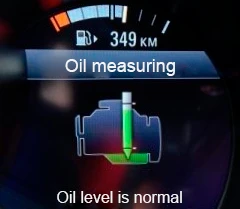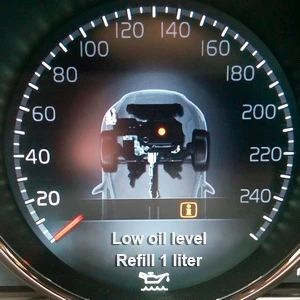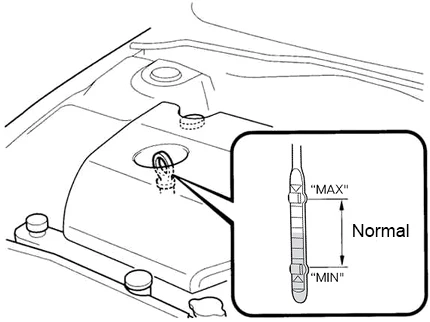Calculator for engine oil consumption rate

Engine oil consumption is determined depending on the amount that burns in the engine. Excessive consumption of engine oil can indicate its poor quality (lubricant burns excessively) or engine fault (in most cases, there is leakage through valve stem seals and oil scraper rings). Everything depends on the specific numbers and additional symptoms that may occur during the burn of lubricating fluid.
How engine oil consumption rate is calculated
To determine the rate, it is not the mileage that is taken into account, but the fuel resource consumption. This figure is more accurate than the traveled distance, because when you stand in traffic jams, the oil is consumed even more, but the odometer does not change its value.
Engine oil consumption is usually calculated based on its volume consumed for burning of 100 liters of fuel.
To find out the rate of oil consumption in the engine of your car, you need to employ the calculation formula and calculator, or use this online form. It involves the calculation of the permissible amount of oil consumption through burning according to the type of engine, the volume of operating oil and the amount of the consumed fuel, taking into account the state of the piston group.
Calculation formulas of oil consumption rate
The total actual oil consumption through burning per a cycle of its operation (from replacement to replacement) can be calculated by the following formula:
Qy = ∑q + (Qз-Qсл),
Where ∑q — the oil filled up during a cycle (between maintenance periods); Qз — the oil filled when refueling; Qсл – the oil drained during the replacement.
The consumption of the filled oil in liters per 100 liters of fuel is determined as follows:
Mз = V / (P*k),
Where V — the engine oil capacity; P – usable fuel k – the coefficient taking into account the wear of the piston group (k for diesel cars is 1.25; for gasoline cars is 1.15; for turbo cars is 1.3).
Rate of oil consumption through burning

For passenger vehicles, the standard rate of burning is 0.005 — 0.025% per 100 liters of fuel, which ranges approximately from 5 to 25 grams of oil per 1 thousand km. This figure can be up to 0.1% and 100 grams per 1000 km respectively, if the engine is worn. And if the car reaches its capacity limits or has a turbocharged or diesel unit, this rate is even greater.
For long trucks, the oil consumption rate is 0.3 — 0.4% of fuel consumption. The calculation formula uses the amount of burnt fuel and filled-up oil for this period. But such a calculation of oil consumption, suggested by the motor manufacturer Scania, is relevant only for heavy cars with a large engine. Calculations of the lubricating fluid consumption in passenger cars, both with diesel and gasoline engines, are slightly different.
The consumption rate of engine oil per 100 liters of fuel for passenger vehicles
| Type of engine | Acceptable burning | |||
|---|---|---|---|---|
| In percent, % 100 l. fuel | In grams, g. per 1000 km | |||
| New | Worn out | New | Worn out | |
| Gas | 0,005 – 0,025 | 0,025 – 0,1 | 5 до 25 | 25 – 100 |
| Turbocharged | 0,05 – 0,08 | 0,5 – 1 | до 100 | 100 – 300 |
| Diesel | 0,035 – 0,25 | 0,3 – 0,8 | 30 – 55 | до 200 |
| Rotary | 0,5 – 1,2 | 1 – 2 | 500 – 1000 | до 2000 |
A gasoline engine that reaches its capacity limits can consume from 0.4 to 0.6%, with 100 l of the consumed fuel, which is approximately 400 — 600 grams of engine oil per 1000 operational km. A diesel engine is characterized by exactly the same situation, i.e. the consumption of engine lubrication increases by 0.5%. But if boosted turbodiesels with two turbines are used, the consumption rate can reach up to 3% of the oil volume poured into the engine.
Note that the oil consumption rates increase significantly for cars after overhaul and being in operation for more than five years.
Method to determine oil consumption

Dipstick oil level
Determination of the actual value of the specific consumption of engine oil through burning is carried out after 200-300 operational km. The car should be drivable during the test run. The crankcase oil level should be between the marks «MAX» and «MIN» of the engine dipstick. Before the test run it is necessary to warm up the engine, the oil temperature should be 80-85 °C. Oil should be drained on level ground. It should flow from the pan for 15 minutes. For the result to be accurate, it is recommended to determine not the volume, but the weight, since the amount of lubricant remaining in the filter can be estimated only by weighing it.Oil level according to the dipstick.
How to use the calculator
A key role in this calculation is played by the volume of the burnt fuel and the amount of operating oil, as well as the type of engine. The specific oil consumption is calculated with respect to this volume and peculiarities of the operation.
To calculate the specific consumption of the engine oil, the following data is necessary:
- Enter the average fuel consumption in liters per 1 000 operational km In the field “fuel” (it is 100 liters by default and based on the calculation formulas);
- Enter the oil volume that is designated by the manufacturer as necessary during the filling in the field «oil»;
- Select the type of engine and check if the car has been in operation for more than 5 years.
- Click “calculate”.
This calculator can be an indispensable helper for calculating the consumption rate of lubricants designed for the current accounting of the specific consumption of the engine oil, if they are required. After all, many drivers pay great attention to the engine oil consumption. This calculator shows if you are within the rating values. If not, you will have an unprejudiced reason to seek for causes and possible faults.
Conclusion
So, if the engine is in good repair, it practically does not consume oil, and you will not need to add oil until the next replacement. Its level will be within the permissible limits on the dipstick (within the min/max marks). But there are cases when the manufacturer specifies the consumption rate for a particular engine unit (some engines consume a large amount of oil), then its filling is considered normal and is not a fault, but it does not exceed 1-2 glasses from replacement to replacement.
It is important to understand that the more intensively the engine runs, the more amount of oil burns in it. For example, the greater the number of revolutions, the more amount of oil will remain in the car engine cylinders. Although you should not forget not only about the mode of the engine operation, but also about its design. Also it is not recommended to neglect the tolerable limits of engine oils and pour fuels and lubricants of questionable quality.
FAQ
-
Formula for calculating oil consumption
You can calculate the oil consumption for the oil burn, for the cycle of its operation between maintenance and consumption per 100 liters of burned fuel. Formulas for these two variants of calculation will be different.
Engine oil consumption from change to change is calculated using the formula:
Qy = ∑q + (Qz-Qsl), where ∑q is the amount of added oil, Qz — oil that was poured into the engine at replacement, Qsl — the amount of oil that was drained.
To calculate the consumption of filled oil, which needed to be filled only for the period of 100 liters of fuel burned by the car, the formula for calculation is as follows:
Mz = V / (P*k), where V is the capacity of the entire engine lubrication system, P — consumed fuel, k — piston wear factor (different depending on the engine, if diesel, it is used — 1.25; petrol — 1.15; turbo — 1.3). -
Calculation of oil consumption per 100 liters of fuel
To calculate the oil consumption per 100 liters of fuel it is necessary to divide the full volume of engine oil system (indicated in the technical documentation of the car) by the product of spent fuel and wear coefficient. So, for example, if the engine needs to fill 4.7 liters of oil, then for 100 liters of fuel consumed by the engine allow 30 grams of oil consumption. You can thus calculate the oil consumption of your engine and your car using the formula.
-
Engine oil consumption rate per 100 litres of fuel
For passenger car engine oil consumption can be considered as normal consumption of 0.005 — 0.0025% per 100 liters of fuel, which equals 5 — 25 grams per 1,000 km. The amount of required oil refill in an engine with significant mileage is considered normal even at 0.1% per one hundred liters of fuel consumed. If it is a car with a carburetor power system, the allowable indicator may be even higher by 0.2%. For trucks, the norm of engine oil consumption in the range of 0.3 — 0.4% of fuel consumption.
 Why your car starts then dies
Why your car starts then dies
 Motor oil test
Motor oil test
 Blue Smoke From Exhaust
Blue Smoke From Exhaust
 White smoke from exhaust
White smoke from exhaust
 Why is dashboard oil light on
Why is dashboard oil light on
 Why does engine oil eventually turn black
Why does engine oil eventually turn black